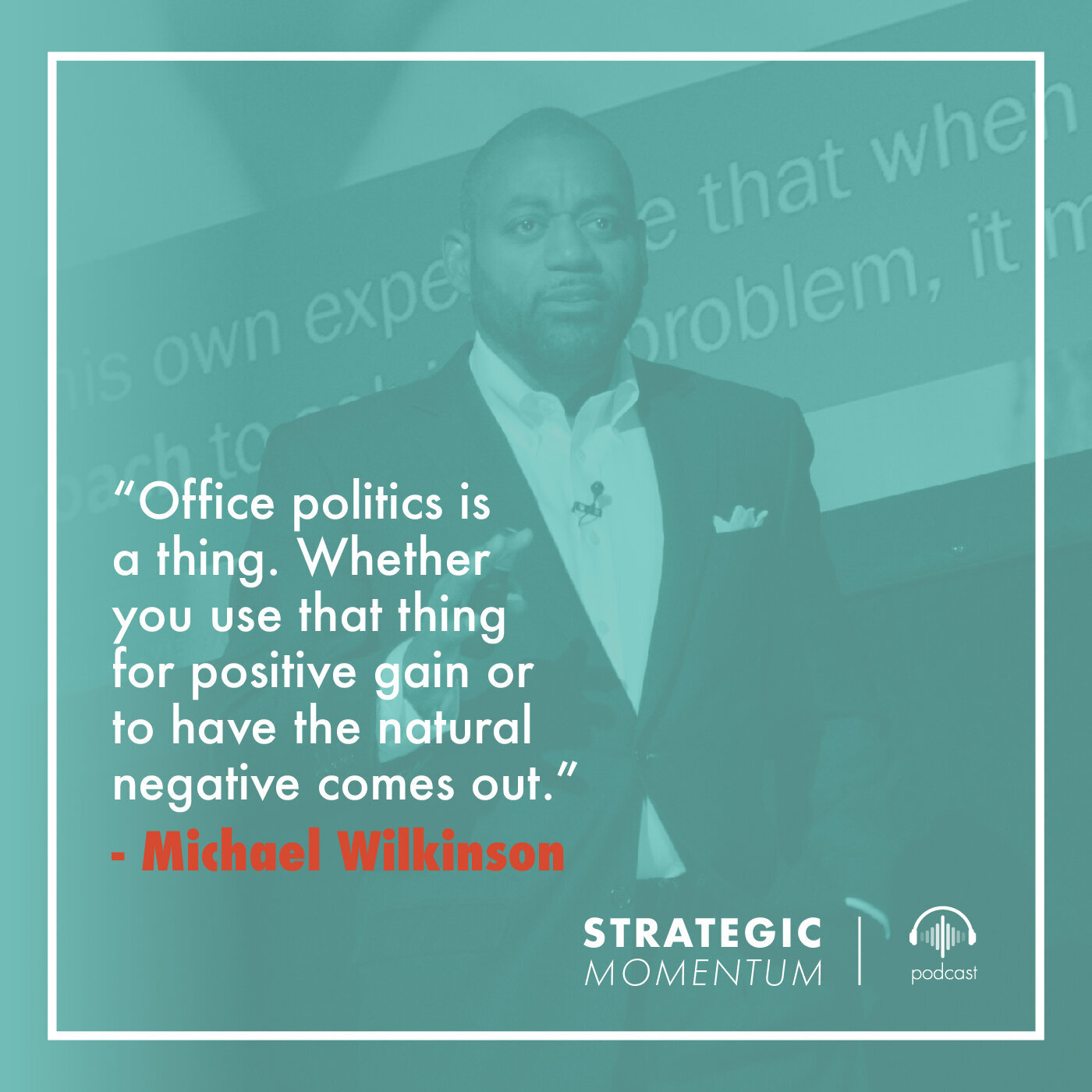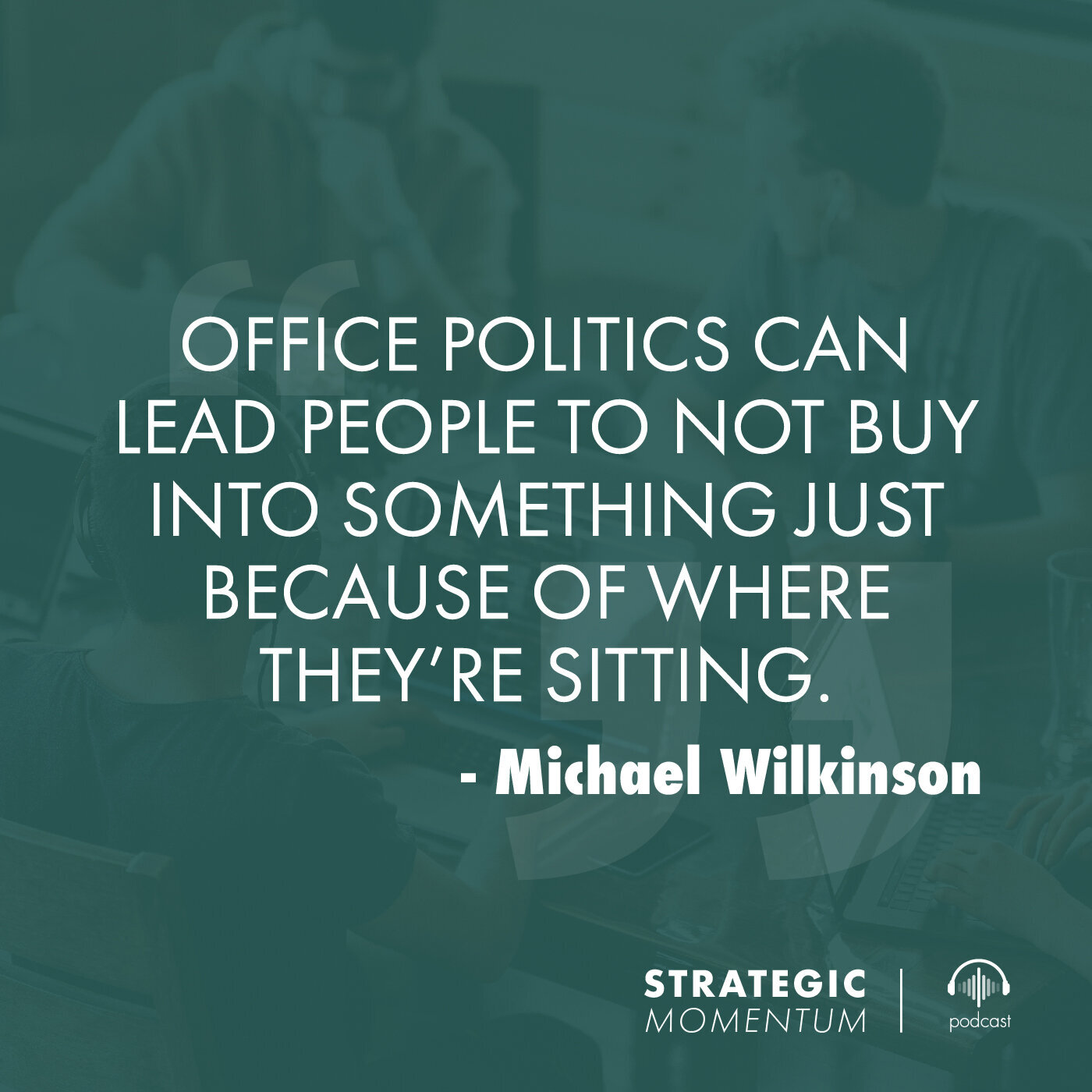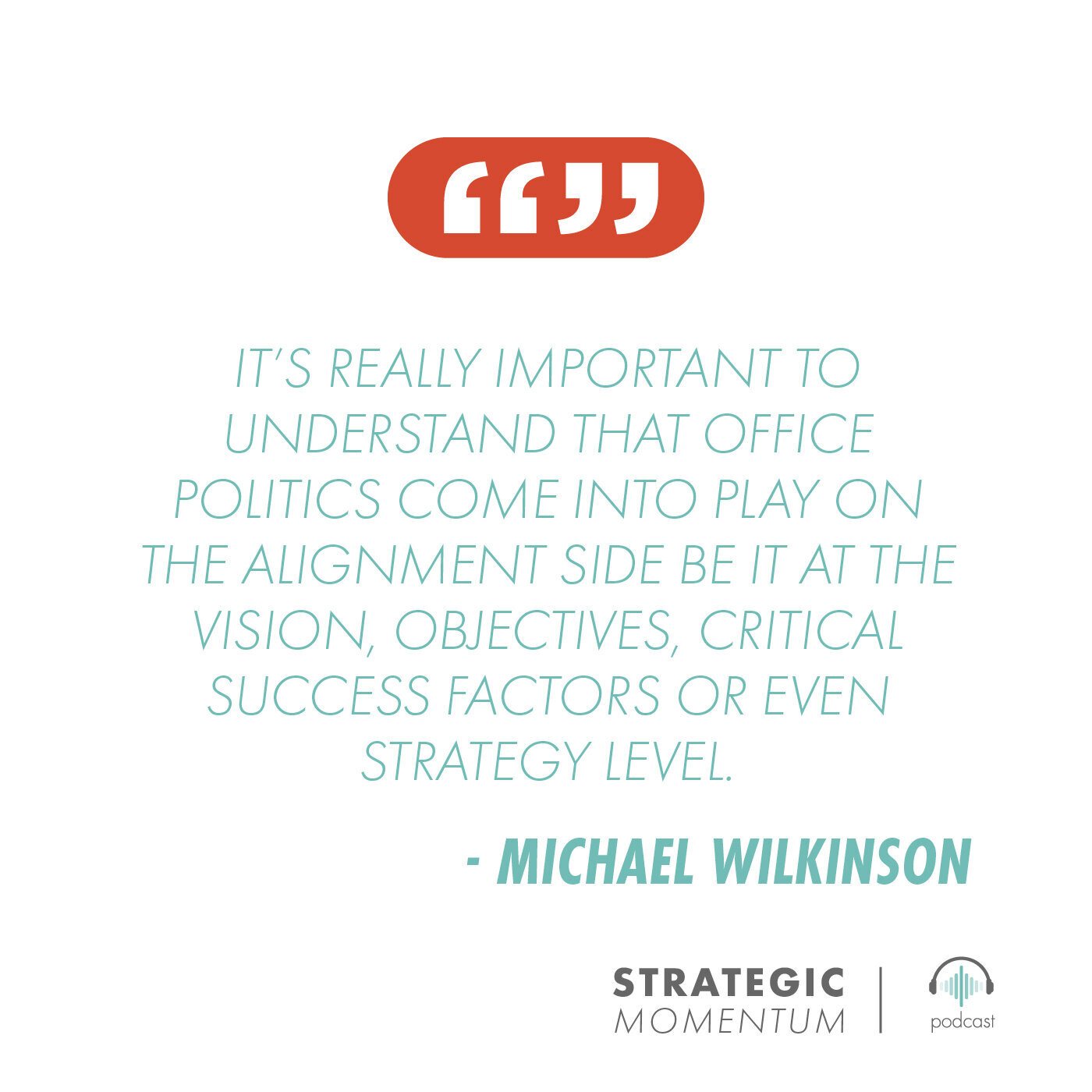Ep. 78 - Office Politics (Pt. 3) Understanding the 5 C’s and the Strategic Vision to Build Trust and Alignment - with Michael Wilkinson
Find Us Wherever You Listen To Podcasts
Last season on Strategic Momentum, we started our series on understanding and navigating office politics. The last two episodes in the series featured a panel of guests sharing different advice and perspectives, but in this episode, we dive deep with Michael Wilkinson.
Michael is a veteran on the show and one of our favorite voices on leadership and management. He’s a Master Facilitator and Founder of Leadership Strategies, the #1 Facilitation Training Company in the US.
In Part One, Michael explained how political behavior in the office really comes down to two things: alignment and trust. In this episode, Michael walks us through:
What misalignment and a lack of trust in an organization look like
How to break down alignment and trust to find the root of political problems
How to create your strategy for managing those dynamics effectively
Understanding Trust, Alignment and the “5 Cs”
Essentially, trust comes down to personal relationships and alignment comes down to overarching business dynamics. When people have conflicting motives, they tend to side-step those who are in their way—and then, those trust issues and misalignments worsen and spread throughout the organization. When people and teams aren’t on the same page, politics happen.
Building trust takes being proactive in how to interact with other people. If you’re the recipient of negative political behavior, it may be because of mistrust in one of the areas of the 5 Cs:
Competence — is the person capable of doing something?
Communication — is the person communicating clearly?
Commitment — can you trust that the person is committed to the job?
Caring — does the person care about you, and you them?
Character — ultimately, does the person display a trustworthy character?
While the 5 Cs help you determine who you trust, it’s also up to you to be mindful about how you go about demonstrating them. Being able to present yourself as trustworthy could be the determining factor between building and burning bridges. And being able to identify which of the 5 Cs is the problem between you and another person, or between people in your organization, is part of developing that all-important EQ.
While trust is broken into the “trust triangle,” alignment can be seen as a funnel or flow chart where each level depends on the one below it. You have vision, then objectives or measures of success, then critical success factors — those strategies and tactics for getting you there. When there is an issue with alignment, it’s because one of these is off.
Thus, misalignment issues come down to conflicting visions of an outcome or an inability to effectively communicate between the various parties.
Apply These Principles to Office Politics
How do you set yourself up so you are best positioned to avoid situations where you could easily fall prey to being part of the swirl?
When you are integrating yourself into a new job, role, or team, the best thing to do is to seek out alignment first. Ask your new supervisor what their goals are, their visions of success, and how they plan to make progress toward those goals. And ask where they see you fitting into that vision.
Then, you work on demonstrating the 5 Cs to build trust. Ask plainly how your boss prefers to communicate and how best you can demonstrate your commitment. If you’re working with other verticals, go outside of your silo to understand the goals and strategies of the other departments to find alignment horizontally as well. It’s about inquiring how you can gain a better baseline of understanding and engaging the political dynamics in a way that helps you get better grounded and move forward.
As Michael says, “It is all about alignment, all about trust. And you, as an individual, then is taking that into control, taking it into your own hands to make sure you're aligned with the people who are important in your career.”
Career Advice:
Do what you love and the money will come.
Do what you love and be great at what you love.
Key Takeaways
When you have one organization wanting to do one thing, and others wanting to do something else then politics happen.
Office politics can be positive when it comes to facilitating efficient execution of projects. When putting together a team, choosing people who are aligned with the success of that solution is a very positive thing to do. Picking people who are misaligned with that may not be in your best interest.
While understanding people’s positions can help you build that strategic framework to align teams with tasks, oftentimes, the mindsets people have and the affiliations they choose could still result in negative political behavior. This is why creating a culture of open communication around goals and objectives is key to getting everyone on the same path.
The 5Cs help you locate the root of the problem so you can work towards a solution. But the deeper you go into the trust triangle, the harder it is to fix.
If someone has a Competency issue then there is a disconnect when it comes to one’s skills. That could be remedied by training them assuming they report to you.
If it’s a Communication issue, it may involve more work on your part to ask questions and extract clarity from them. It’s about understanding each other’s communication style to get to a common ground.
Commitment is about behavior of which may or may not require a behavioral change and that could be difficult.
Caring involves someone’s feelings, which is difficult but not impossible to alter. If they don’t care about you or the situation, ask them why? And keep digging until you can find the root of the issue.
Character is the most difficult to change. If a person is dishonest or lacks integrity, it may be time to let them go rather than invest in “fixing” them.
Alignment can be viewed as a funnel with different levels that must be addressed:
The vision level
The objectives level
The critical success factors level
The strategy level
The key is to start at the top and work down to ensure that these have all been clearly communicated throughout the team/organization so that everyone is on the same page. You need buy-in to be able to move from vision to strategy to execution.
If you find people who are unwilling to align, they may be better off on another project or another organization.
Consider asking the following questions of your supervisor immediately when you start a new role or job in order to build trust and alignment. It shows your character and that you care from the start.
Where do you want to take our department? What do you want us to become?
When you think three to five years from now, what are you looking to do?
What do you see as your measures of success in making progress to get there?
What are the strategies you're trying to do in our department to make it happen?
What do you see my role in supporting you and bringing this about?”
What are the things that you want me to be able to do well and the things that I should be looking to improve on as I improve in my career?
How do I best communicate with you?
How do I show that I am committed to us as an organization? What are the behaviors that I would display that would show this?
As a manager, create a guidebook for your employees called “Managing Your Boss” for “all the stuff that they're going to find out over time, but you, as a leader, can package it in a three or four-page document that they can now get up to speed quickly.” It should cover topics including:
If you have an idea, here's how best to present it so that you will be successful.
Here's what's really important to me to achieve and here's what you can do to help me achieve what I am trying to achieve.
If you're wanting to communicate with me, here's the best way to communicate with me.
Resources:
Connect with Michael via Email | Linkedin
Learn more about Leadership Strategies
Buy Michael’s Books on Facilitation
Related Episodes:












